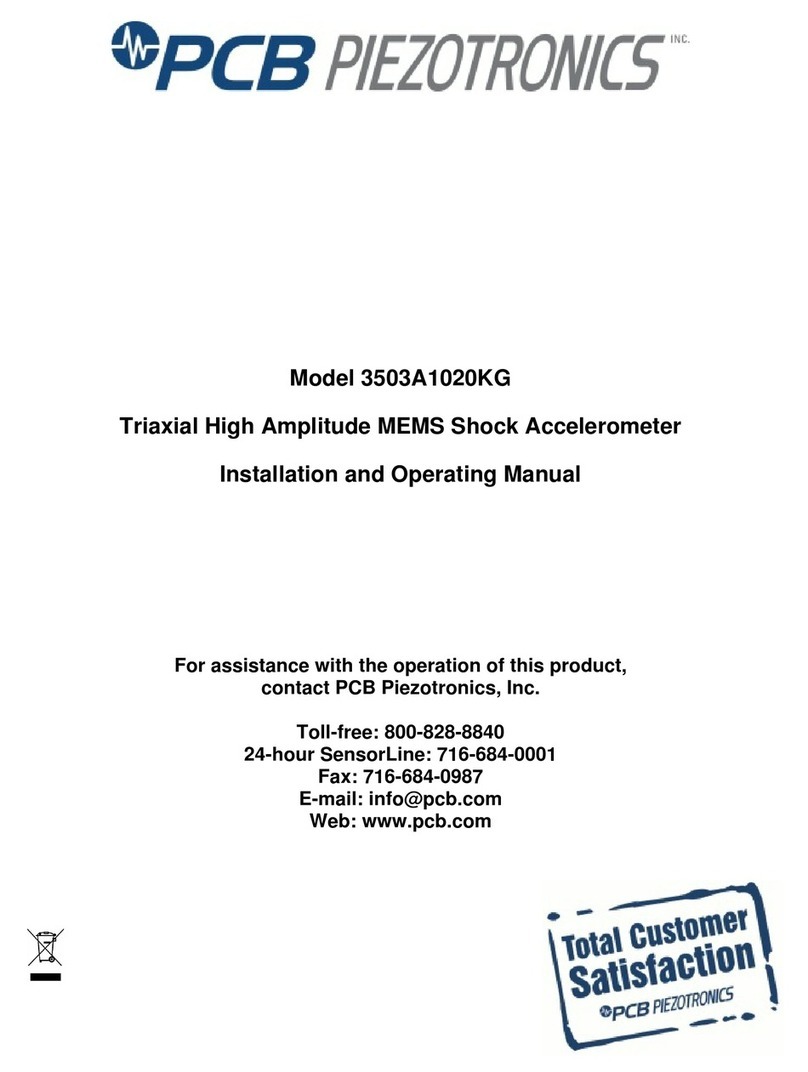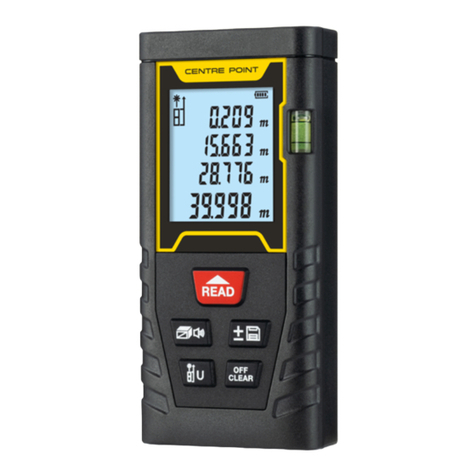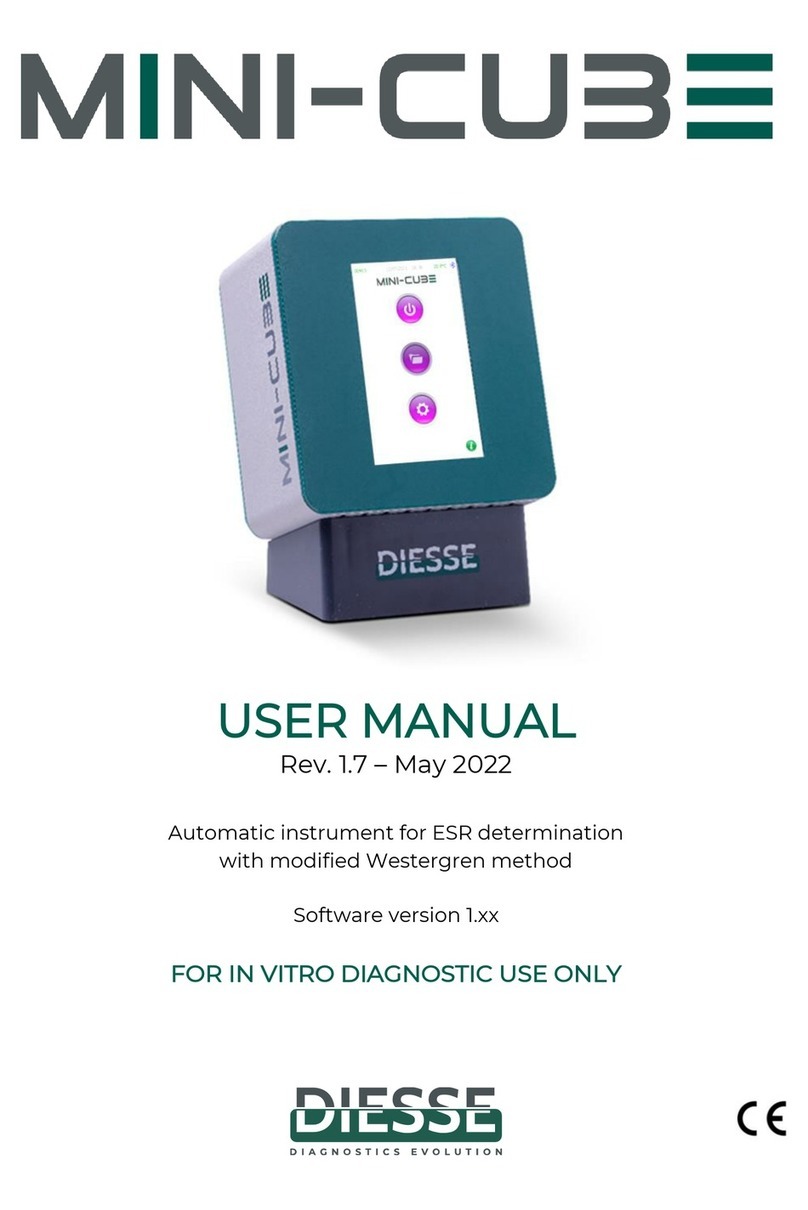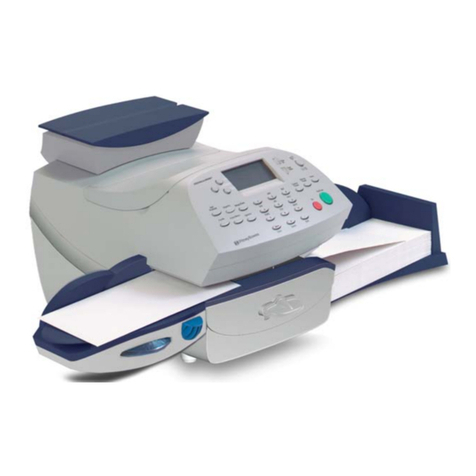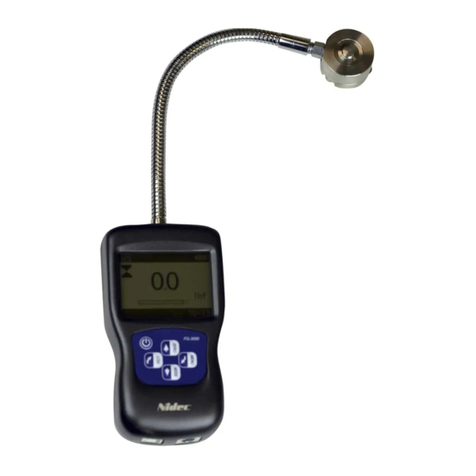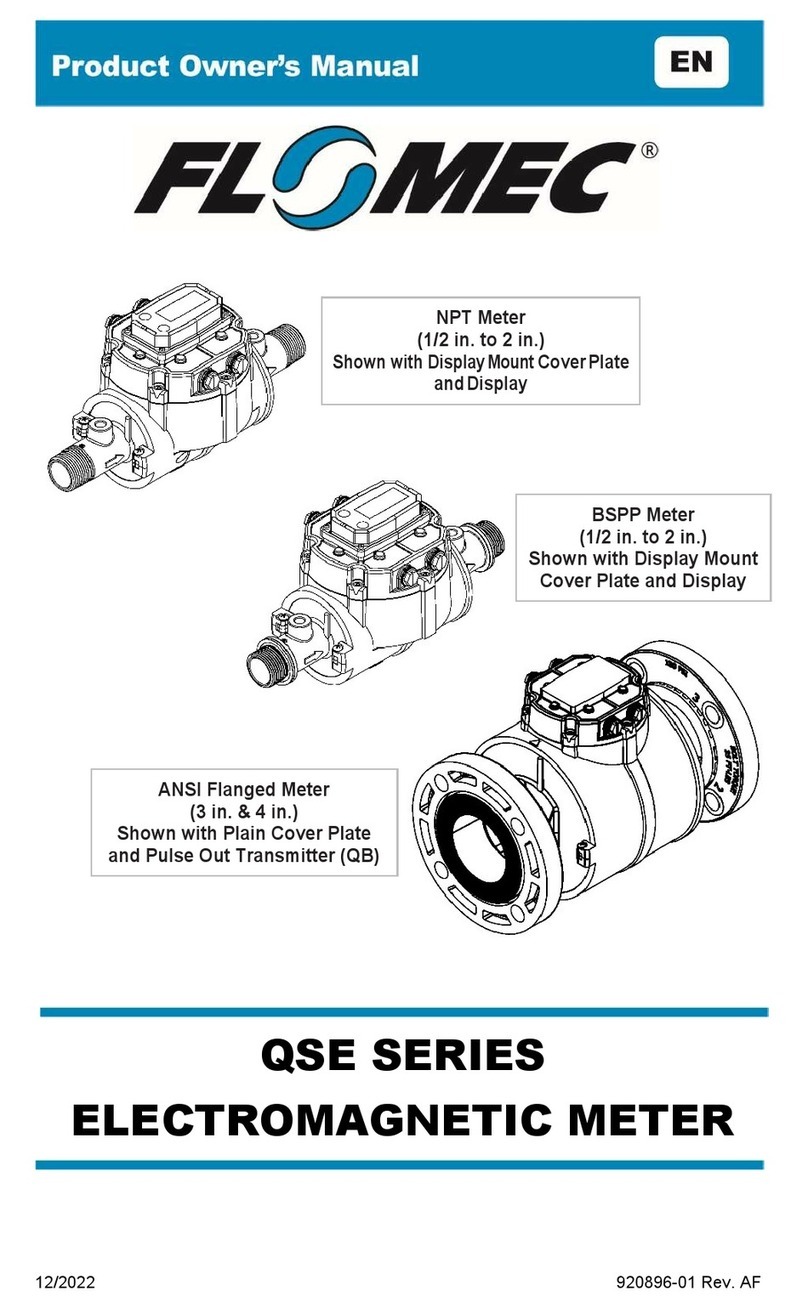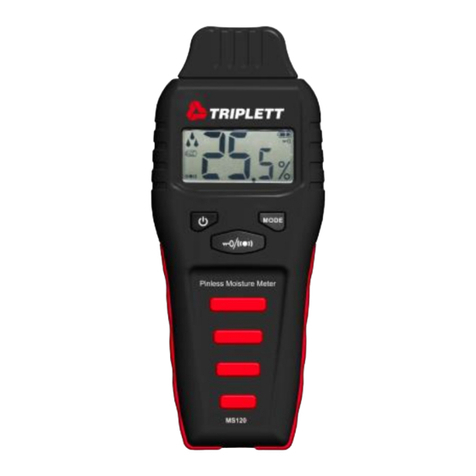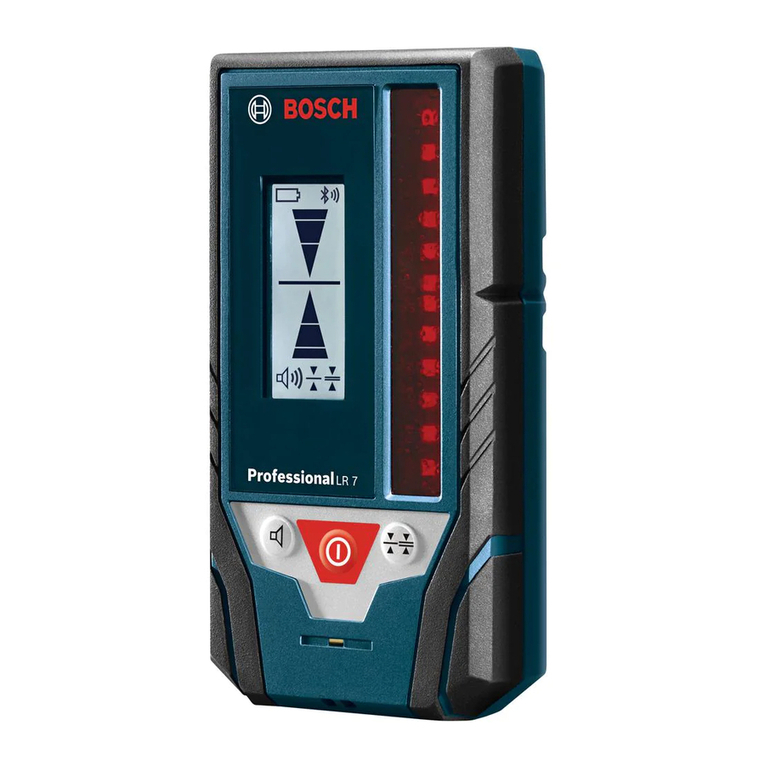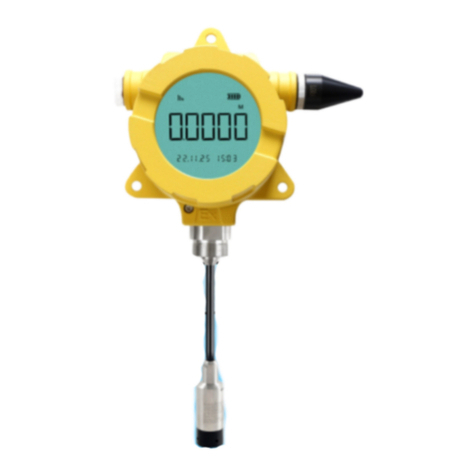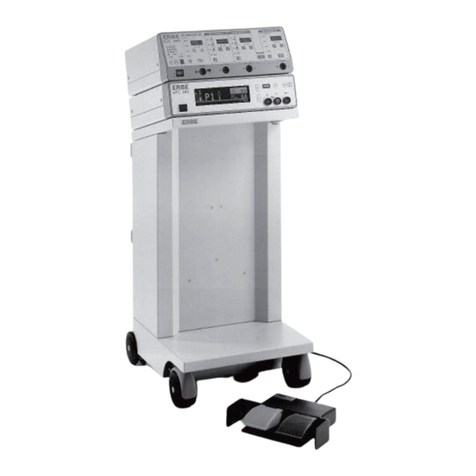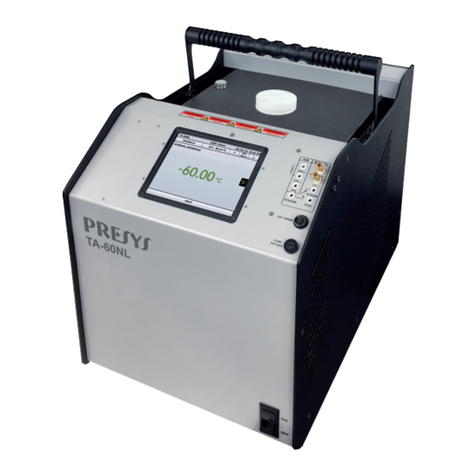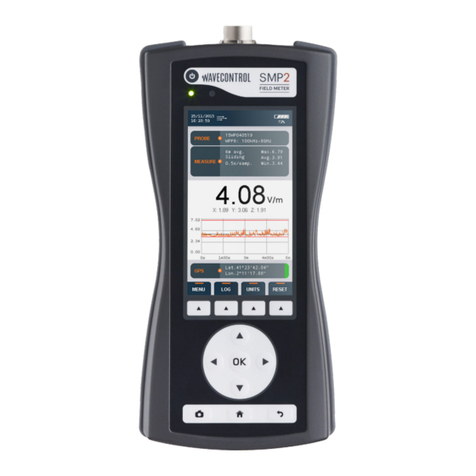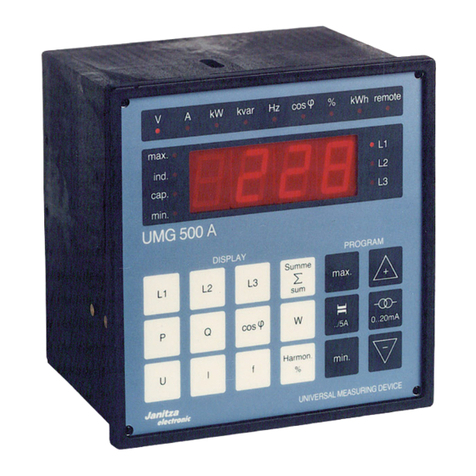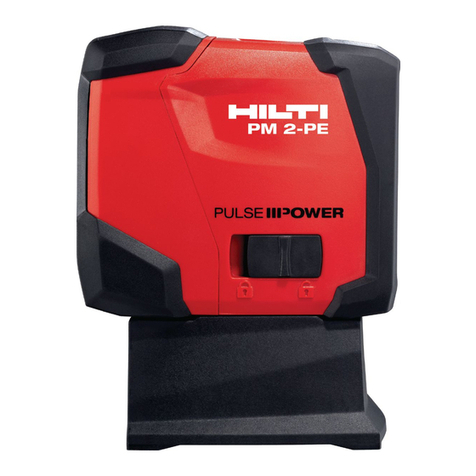PSB 3503A1160KG User manual

Model 3503A1160KG
TRIAXIAL HIGH AMPLITUDE MEMS SHOCK ACCELEROMETER
Installation and Operating Manual
For assistance with the operation of this product,
contact the PCB Piezotronics, Inc.
Toll-free: 716-684-0001
24-hour SensorLine: 716-684-0001
Fax: 716-684-0987
E-mail: [email protected]
Web: www.pcb.com

The information contained in this document supersedes all similar information that
may be found elsewhere in this manual.
Service –Due to the sophisticated
nature of the sensors and associated
instrumentation provided by PCB
Piezotronics, user servicing or repair is
not recommended and, if attempted,
may void the factory warranty. Routine
maintenance, such as the cleaning of
electrical connectors, housings, and
mounting surfaces with solutions and
techniques that will not harm the
physical material of construction, is
acceptable. Caution should be observed
to ensure that liquids are not permitted
to migrate into devices that are not
hermetically sealed. Such devices
should only be wiped with a dampened
cloth and never submerged or have
liquids poured upon them.
Repair –In the event that equipment
becomes damaged or ceases to
operate, arrangements should be made
to return the equipment to PCB
Piezotronics for repair. User servicing or
repair is not recommended and, if
attempted, may void the factory
warranty.
Calibration –Routine calibration of
sensors and associated instrumentation
is recommended as this helps build
confidence in measurement accuracy
and acquired data. Equipment
calibration cycles are typically
established by the users own quality
regimen. When in doubt about a
calibration cycle, a good “rule of thumb”
is to recalibrate on an annual basis. It is
also good practice to recalibrate after
exposure to any severe temperature
extreme, shock, load, or other
environmental influence, or prior to any
critical test.
PCB Piezotronics maintains an ISO-
9001 certified metrology laboratory and
offers calibration services, which are
accredited by A2LA to ISO/IEC 17025,
with full traceability to SI through
N.I.S.T. In addition to the normally
supplied calibration, special testing is
also available, such as: sensitivity at
elevated or cryogenic temperatures,
phase response, extended high or low
frequency response, extended range,
leak testing, hydrostatic pressure
testing, and others. For information on
standard recalibration services or
special testing, contact your local PCB
Piezotronics distributor, sales
representative, or factory customer
service representative.
Returning Equipment –Following
these procedures will ensure that your
returned materials are handled in the
most expedient manner. Before
returning any equipment to PCB
Piezotronics, contact your local
distributor, sales representative, or
factory customer service representative
to obtain a Return Warranty, Service,
Repair, and Return Policies and
Instructions Materials Authorization
(RMA) Number. This RMA number
should be clearly marked on the outside
of all package(s) and on the packing
Service, Repair, and Return
Policies and Instructions

list(s) accompanying the shipment. A
detailed account of the nature of the
problem(s) being experienced with the
equipment should also be included
inside the package(s) containing any
returned materials.
A Purchase Order, included with the
returned materials, will expedite the
turn-around of serviced equipment. It is
recommended to include authorization
on the Purchase Order for PCB to
proceed with any repairs, as long as
they do not exceed 50% of the
replacement cost of the returned
item(s). PCB will provide a price
quotation or replacement
recommendation for any item whose
repair costs would exceed 50% of
replacement cost, or any item that is not
economically feasible to repair. For
routine calibration services, the
Purchase Order should include
authorization to proceed and return at
current pricing, which can be obtained
from a factory customer service
representative.
Contact Information –International
customers should direct all inquiries to
their local distributor or sales office. A
complete list of distributors and offices
can be found at www.pcb.com.
Customers within the United States may
contact their local sales representative
or a factory customer service
representative. A complete list of sales
representatives can be found at
www.pcb.com. Toll-free telephone
numbers for a factory customer service
representative, in the division
responsible for this product, can be
found on the title page at the front of this
manual. Our ship to address and
general contact numbers are:
PCB Piezotronics, Inc.
3425 Walden Ave.
Depew, NY14043 USA
Toll-free: (800) 828-8840
24-hour SensorLineSM: (716) 684-0001
Website: www.pcb.com

PCB工业监视和测量设备 - 中国RoHS2公布表
PCB Industrial Monitoring and Measuring Equipment - China RoHS 2 Disclosure Table
部件名称
有害物质
铅(Pb)
汞
(Hg)
镉
(Cd)
六价铬(Cr(VI))
多溴联苯 (PBB)
多溴二苯醚(PBDE)
住房
O
O
O
O
O
O
PCB板
X
O
O
O
O
O
电气连接器
O
O
O
O
O
O
压电晶体
X
O
O
O
O
O
环氧
O
O
O
O
O
O
铁氟龙
O
O
O
O
O
O
电子
O
O
O
O
O
O
厚膜基板
O
O
X
O
O
O
电线
O
O
O
O
O
O
电缆
X
O
O
O
O
O
塑料
O
O
O
O
O
O
焊接
X
O
O
O
O
O
铜合金/黄铜
X
O
O
O
O
O
本表格依据 SJ/T 11364 的规定编制。
O:表示该有害物质在该部件所有均质材料中的含量均在 GB/T 26572 规定的限量要求以下。
X:表示该有害物质至少在该部件的某一均质材料中的含量超出 GB/T 26572 规定的限量要求。
铅是欧洲RoHS指令2011/65/ EU附件三和附件四目前由于允许的豁免。
CHINA RoHS COMPLIANCE

DOCUMENT NUMBER: 21354
DOCUMENT REVISION: D
ECN: 46162
Component Name
Hazardous Substances
Lead
(Pb)
Mercury
(Hg)
Cadmium
(Cd)
Chromium VI
Compounds
(Cr(VI))
Polybrominated
Biphenyls
(PBB)
Polybrominated
Diphenyl
Ethers (PBDE)
Housing
O
O
O
O
O
O
PCB Board
X
O
O
O
O
O
Electrical
Connectors
O
O
O
O
O
O
Piezoelectric
Crystals
X
O
O
O
O
O
Epoxy
O
O
O
O
O
O
Teflon
O
O
O
O
O
O
Electronics
O
O
O
O
O
O
Thick Film
Substrate
O
O
X
O
O
O
Wires
O
O
O
O
O
O
Cables
X
O
O
O
O
O
Plastic
O
O
O
O
O
O
Solder
X
O
O
O
O
O
Copper Alloy/Brass
X
O
O
O
O
O
This table is prepared in accordance with the provisions of SJ/T 11364.
O: Indicates that said hazardous substance contained in all of the homogeneous materials for this part is below the limit
requirement of GB/T 26572.
X: Indicates that said hazardous substance contained in at least one of the homogeneous materials for this part is above
the limit requirement of GB/T 26572.
Lead is present due to allowed exemption in Annex III or Annex IV of the European RoHS Directive 2011/65/EU.

Manual Number: 43331
Manual Revision: B
3500/3600 Series Piezoresistive Shock Accelerometer Operating Guide
1
1.0 Introduction
This Operating Guide contains information that will
familiarize the user with the basic operation and installation of
the 3500/3600 Series Piezoresistive (PR) Shock
Accelerometers. However, it is not intended to cover all of the
specific measurement challenges that one may encounter while
using the device. Therefore, if you have detailed questions or
are unsure of how to properly operate the sensor after reading
this Operating Guide, please contact a PCB Application
Engineer using our 24-Hour SensorLineTM at 716-684-0001.
2.0 Principle of Operation
PR accelerometers are passive devices which require stable
external power, typically a regulated dc voltage such as 10V
(or more recently 5V or 3.3V), to operate with new
electronics. These full-bridge sensors include four, active,
silicon strain-sensing elements which change resistance
proportionally to an applied acceleration. In response to an
acceleration input, the resistance will increase for two of the
sensing elements and the resistance will decrease for the other
two elements, as shown in the Wheatstone-bridge circuit of
Figure 1. The sensitivity of the bridge is proportional to the
Excitation Voltage.
Figure 1 –Wheatstone Bridge Circuit
Terminology related to PR devices includes:
ZMO –Zero Measurand Output, also called bias or offset, is
the output when no input acceleration is applied.
TSS –Thermal Sensitivity Shift, the change of sensitivity due
to temperature. The sensors are uncompensated, so they
display a slight linear decrease in sensitivity as temperature
increases.
TZS –Thermal Zero Shift, the change in ZMO due to
temperature. This is less predictable, and from unit to unit may
have positive or negative slope, although it will be stable for
any one unit.
3.0 Features
The 3500/3600 Series uses micro-electromechanical systems
(MEMS) technology, in which all structural and electronic
components are manufactured in silicon using electronic
microfabrication technologies. MEMS devices are preferred in
many high shock impact measurements over piezoelectric
elements, since these PR devices are inherently DC coupled,
exploit the strength of single crystal silicon (SCS) and display
minimal zero shift. However, an additional characteristic of
SCS is extremely low internal damping, which results in
susceptibility to overshoot and resonant excitation. Although
the stiffness of silicon can allow extremely high resonant
frequencies in some MEMS shock sensor designs, PCB
MEMS sensors take a different approach in which the resonant
frequency is intentionally lowered to reduce the response to
higher frequency energy present in shock events. The
relatively low resonance also creates displacements of the
seismic element sufficient to introduce squeeze film damping.
Air is used rather than a fluid so thermal effects on damping
are negligible.
Manufactured using recent advances in semiconductor
processing, the PCB MEMS design consists of a mildly under-
damped sensor with sufficient bandwidth to accurately track
rigid-body vehicle deceleration. Resonant amplification is
reduced by orders of magnitude, and survivability is increased.
Ruggedness is enhanced through the use of mechanical stops.
The sensors are manufactured as the sandwich of three wafers,
with the active core surrounded by the two outer wafers which
provide hermetic protection and restrict the travel of the proof
mass.
Because many such applications are coupled with battery
powered conditioning and data acquisition, PCB MEMS
sensors were designed with relatively high value resistors
(approximately 10 times that of other devices) to maximize
battery life.
4.0 Common Applications
The 3500/3600 Series PR Shock Accelerometers achieve true
DC response for measuring long duration shock. For this
reason, they are preferred for applications in which integration
from acceleration to velocity or displacement may be
or
Yellow

Manual Number: 43331
Manual Revision: B
3500/3600 Series Piezoresistive Shock Accelerometer Operating Guide
2
performed. These are violent events. Because of the critical
nature of these and similar test applications, PCB MEMS DC
Accelerometers have been designed and manufactured with the
following common characteristics:
Rugged, all-welded, titanium housing, or ceramic housing,
insures reliability and durability in demanding
applications and environments.
The MEMS sensor includes over-range stops set at
approximately twice the full range.
Gas damping attenuates unwanted high-frequency output.
5.0 Sensor Installation
The 3500/3600 Series DC Accelerometers are available in
various forms. Review Outline Drawings and/or Installation
Drawings provided with sensors for specific details and
requirements related to hardware, mounting, materials,
packaging, cabling, etc.
For certain applications not requiring a signal cable, surface
mount technology (SMT) style sensors are available upon
request. Contact PCB Application Engineers to discuss
specific application requirements.
When choosing a mounting method, it’s important to take
characteristics like location, temperature, environment, and
surface condition into consideration. The sensor must be
mounted on a clean, flat surface to avoid the potential for
misalignment and/or limited contact with the mounting surface
which may diminish the sensor’s performance. Mounting
surface flatness, finish & preparation requirements are
indicated on the provided Sensor Installation Drawing.
Mounting the sensor will require a clean contact surface to
avoid small particles or debris trapped between the mounting
surface and sensor that can preload the accelerometer case
with unwanted static strain, possibly resulting in zero-shift
during a shock measurement.
Prepare a smooth, flat mounting surface and, if applicable,
drill and tap mounting holes according to the Sensor
Installation Drawing.
Wipe clean the mounting surface and, as appropriate,
apply a thin film of couplant, such as machinist oil, to
enhance transmissibility by filling small voids in the
mounting surface and increasing mounting stiffness.
Hand-tighten the sensor (or mounting hardware, as
appropriate), then torque down per the Sensor Installation
Drawing. In extreme conditions it’s recommended to
check the mounting torque after each measurement. It’s
also recommended that a thread locking adhesive be
applied to any threads, if applicable.
Ceramic LCC (leadless chip carrier) packages available in this
series are designed to be installed on circuit boards with
conventional surface mounting techniques. An under-fill epoxy
is recommended to be used for additional mechanical strength.
6.0 Power
Normally PR devices are powered with regulated excitation,
since the sensitivity is proportional to input voltage. PCB
MEMS sensors generally exhibit good proportionality (due to
minimal self-heating of the comparatively high-resistance
elements). Still, it is generally recommended to obtain the
calibrated sensitivity using the intended excitation voltage. In
integrated applications, in which the data acquisition is
powered by the same voltage that supplies the bridge, it is
possible to reduce the effect of variations in excitation on
overall system sensitivity by using the excitation voltage as the
reference for the data acquisition.
7.0 Typical Measurement System
The output from the sensor is typically routed to a bridge
conditioner then an oscilloscope or various data acquisition
instruments. Consult PCB Application Engineering for
additional signal conditioning options. To take advantage of
the DC response of the accelerometer, the readout device must
be in a DC coupled state. Consult the appropriate manufacturer
or product manual for your readout device for details.
8.0 Sensor Verification
Generally the ZMO of a PR transducer is a good measure of
the health of the transducer. Input Resistance (from Red to
Black) or Output Resistance (from Green or Yellow to White),
is less commonly used to check the condition, since resistance
changes with temperature. A thorough check of the health
(suggested both before and after an expensive test) must
include calibration of the sensitivity.
In some laboratories which use piezoresistive transducers, it is
customary to check the continuity and gain of the conditioning
and data acquisition system using a technique called “Shunt
Calibration”. By temporarily unbalancing the bridge with a
shunt resistor placed in parallel with a leg of the bridge
(usually between the “+ Sig” wire and either the “+ Exc” or “–
Exc”), dc shifts of the offset are created. Whereas the process
does not calibrate the transducer, it is a check of system gain,
with accuracy of the resultant dc shift in output dependent on
the degree that the resistances of both the leg of the bridge and

Manual Number: 43331
Manual Revision: B
3500/3600 Series Piezoresistive Shock Accelerometer Operating Guide
3
the shunt resistor are accurately known. Among other sources
of variability, temperature can change the value of the
resistors, and therefore the Shunt Calibration output. The user
should be aware that because the sensors are full bridge
transducers, all legs are active and will have temperature
coefficients typical of piezoresistive sensors (approximately
+0.1%/degree C).
9.0 Sensor Calibration
For shock accelerometers, the most appropriate, accurate and
reliable calibration is with a comparison shock using a back-
to-back reference and pneumatic exciter, as described in ISO
16063-22, “Methods for the calibration of vibration and shock
transducers —Part 22: Shock calibration by comparison to a
reference transducer.” PCB offers this calibration as a service.
10.0 Maintenance and Repair
Because of the sophisticated nature of PCB instrumentation,
field repair of the equipment is not recommended. Most PCB
sensors are of modular construction and are factory repairable.
A repair or replacement quotation is available at no charge.
Before returning equipment for repair, it is recommended that
the user confer with a factory application engineer (or inter-
national representative) to first troubleshoot the problem.
11.0 Return Procedure
To expedite the repair process, contact a factory application
engineer to obtain a Return Material Authorization (RMA)
number prior to sending equipment to the factory. Please have
information, such as model number, serial number and
description of the problem, available.
Customers outside the U.S. should consult their local PCB
distributor for information on returning equipment. For
exceptions to this guideline, please contact the International
Sales department to request shipping instructions and an RMA.
For further assistance, please call (716) 684-0001 or fax us at
(716) 684-0987. You may also receive assistance via e-mail at
12.0 Customer Service / Warranty
The employees of PCB strive to provide superior, unmatched
customer service. Should you at any time find yourself
dissatisfied with any PCB product for any reason, consult a
factory Application Engineer or local representative/distributor
to discuss repair, refund, or exchange procedures.
When unexpected measurement problems arise, call our 24-
hour Sensor LineTM at (716) 684-0001 to discuss your
immediate dynamic instrumentation needs with a Factory
Representative.

Model Number
3503A1160KG TRIAXIAL HIGH AMPLITUDE MEMS SHOCK ACCELEROMETER Revision: NR
ECN #: 46383
Performanc
e
ENGLISH S
I
Sensitivity(± 50 %)(at 10 VDC excitation) 0.003 mV/g 0.0003 mV/(m/s²) [1]
Sensitivity 0.0003 mV/V/g 0.00003 mV/V/(m/s²) [7]
Measurement Range ± 60 kg ± 588,400 m/s² pk
Frequency Range(± 1 dB) 0 to 10,000 Hz 0 to 10,000 Hz
Resonant Frequency ≥120 kHz ≥120 kHz
Damping Ratio 2 % Critical 2 % Critical [5]
Non-Linearity(per 10,000 g (98,100 m/s²)) ± 1 % ± 1 %
Transverse Sensitivity ≤3 % ≤3 %
Environmental
Overload Limit(Shock) ± 80,000 g pk ± 784,532 m/s² pk [4]
Overload Limit(Mechanical Stops) ≥80 kg ≥782,534 m/s² pk
Temperature Range(Storage) -65 to 250 °F -54 to 121 °C
Temperature Range(Operating) -65 to 250 °F -54 to 121 °C
Temperature Coefficient of Sensitivity -0.11 %/°F -0.20 %/°C [5]
Zero g Offset Temperature Shift ± 10 mV ± 10 mV [6]
Base Strain Sensitivity 0.3 g/µε2.94 (m/s²)/µε[5]
Electrica
l
Excitation Voltage(Maximum) 15.0 VDC 15.0 VDC
Current Consumption <12 mA <12 mA
Input Resistance(± 700 Ohm) 2000 Ohm 2000 Ohm [1]
Output Resistance(± 2000 Ohm) 6000 Ohm 6000 Ohm [1]
Offset Voltage -40 to +40 mVDC -40 to +40 mVDC [1]
Settling Time 0.01 sec 0.01 sec [2]
Electrical Isolation(Case) ≥107Ohm ≥107Ohm [3]
Physica
l
Sensing Element Piezoresistive MEMS Piezoresistive MEMS
Sensing Geometry Full Active Full Active
Housing Material Titanium Titanium
Sealing Epoxy Epoxy
Size (Height x Length x Width) 0.25 in x 0.47 in x 0.47 in 6.35 mm x 11.81 mm x 11.81 mm
Weight(without cable) 0.1 oz 2.83 gm [5]
Electrical Connector Integral Cable Integral Cable
Electrical Connection Position Side Side
Cable Type 8-Cond., shielded, silcone jacket 8-Cond., shielded, silcone jacket
Cable Termination Pigtail Ends Pigtail Ends
Cable Length 10 ft 3.05 m
Mounting Through Holes (2) Through Holes (2)
Mounting Torque 6 to 8 in-lb 68 to 90 N-cm
All specifications are at room temperature unless otherwise specified.
In the interest of constant product improvement, we reserve the right to change specifications without notice.
ICP®is a registered trademark of PCB Group, Inc.
OPTIONAL VERSIONS
Optional versions have identical specifications and accessories as listed for the standard model
except where noted below. More than one option may be used.
NOTES
:
[1] Verified with test data provided on supplied calibration certificate.
[2] Settling Time is the maximum time after powe
r
-up for the Offset Voltage to be within +/-2% o
f
Measurement Range output of the final offset value. Mounting surface must be at thermal
equilibrium.
[3] Individually tested to ensure compliance with specified value.
[
4
]
Hal
f
-sine
p
ulse duration, ≥20
µ
sec
.
[5] Typical.
[6] -65 to +250 °F, ref. 75 °F (-54 to +121 °C, ref. 24 °C)
[7] Sensitivity is proportional to excitation voltage, and at other excitation values, sensitivity can
be predicted from the 10VDC calibrated value with a small
(
<~.5%
)
increase in uncertaint
y.
SUPPLIED ACCESSORIES:
Model 081A114 MOUNTING SCREW AND WASHER(4-40 x 3/8" SHCS) (2)
Model ACS-62T CALIBRATION OF HIGH G PR ACCCELEROMETER (1)
Entered: LK Engineer: GD Sales: MFG Approved: BAM Spec Number:
Date: 1/17/2017 Date: 1/17/2017 Date: 1/17/2017 Date: 1/17/2017 66350
3425 Walden Avenue, Depew, NY 14043
Phone: 716-684-0001
Fax: 716-684-0987
E-Mail: [email protected]

1
1
2
2
3
3
4
4
A A
B B
C C
D D
CODE
IDENT. NO.
52681
DWG. NO.
SCALE: SHEET
DRAWN CHECKED ENGINEER
TITLE
UNLESS OTHERWISE SPECIFIED TOLERANCES ARE:
DIMENSIONS IN MILLIMETERS
[ IN BRACKETS ]
XX ±0.13
ANGLES 2 DEGREES
3425 WALDEN AVE. DEPEW, NY 14043
DIMENSIONS IN INCHES
DECIMALS XX ±.01
ANGLES 2 DEGREES
FILLETS AND RADII
.003 - .005
DECIMALS X ± 0.3
FILLETS AND RADII
0.07 - 0.13
INSTALLATION DRAWING
66373
1 OF 26X
TRIAXIAL MEMS SHOCK
ACCELEROMETER
XXX ±.005
KRM 1/16/17 ECB 1/16/17 GCD 1/16/17
XZ
Y
Y
X
Y
XZ
Z
X
Z
Y
66373
PCB Piezotronics Inc. claims proprietary rights in
the information disclosed hereon. Neither it nor any
reproduction thereof will be disclosed to others
without the written consent of PCB Piezotronics Inc.
RECOMMENDED MOUNTING SURFACE SHOULD BE FLAT TO WITHIN .0003(.008)
TIR OVER .650[16.51] WITH A 32 [.08] FINISH FOR BEST RESULTS
RECOMMENDED MOUNTING TORQUE ON CAP SCREW, 6-8 IN LBS[68-90 N-CM]
DIRECTIONS SHOWN DEPICT ACCELERATIONS CAUSING POSITIVE OUTPUT
12345678
XYZ
9
#CONNECTION COLOR
1 + EXCITATION RED
2 - EXCITATION BLACK
3 -X-AXIS BLUE
4 + X-AXIS YELLOW
5 - Y-AXIS BROWN
6 + Y-AXIS ORANGE
7 - Z-AXIS WHITE
8 + Z-AXIS GREEN
9 SHIELD N/A
REVISIONS
REV DESCRIPTION DIN
NR RELEASED TO DRAFTING 46383
1
2
3
.233 [5.92]2X
.050 [1.27]
.125 [3.18]2X
.200 [5.08]
.465 [11.81]
.365 [9.27]
.050 [1.27]
.233 [5.92]2X
.100 [2.54]
.100 [2.54]
.365 [9.27]
.465 [11.81]
45°
1
1
1
SCREW ASSEMBLY
(2 SUPPLIED)
2
3.375 [9.53]
MOUNTING HOLE PREPARATION
Ø.089 [2.26] .230 [5.84]
4-40 UNC-2B .187 [4.75]
.250 [6.35]

1
1
2
2
3
3
4
4
A A
B B
CODE
IDENT. NO.
52681
DWG. NO.
SCALE: SHEET
DRAWN CHECKED ENGINEER
TITLE
UNLESS OTHERWISE SPECIFIED TOLERANCES ARE:
DIMENSIONS IN MILLIMETERS
[ IN BRACKETS ]
XX ±0.13
ANGLES 2 DEGREES
3425 WALDEN AVE. DEPEW, NY 14043
DIMENSIONS IN INCHES
DECIMALS XX ±.01
ANGLES 2 DEGREES
FILLETS AND RADII
.003 - .005
DECIMALS X ± 0.3
FILLETS AND RADII
0.07 - 0.13
INSTALLATION DRAWING
66373
2 OF 23X
TRIAXIAL MEMS SHOCK
ACCELEROMETER
XXX ±.005
KRM 1/16/17 ECB 1/16/17 GCD 1/16/17
4FASTEN CABLE TO TEST STRUCTURE TYPICALLY WITHIN 2-3[51-76] OF SENSOR. THEN FASTEN AGAIN WITHIN 3-4[76-101] OF
PREVIOUS ATTACHMENT. BETWEEN THE TEST STRUCTURE AND A FIXED STRUCTURE, ALLOW A SERVICE LOOP LARGE
ENOUGH TO PREVENT PULLING OF THE CABLE WHEN SHAKING. MORE ATTACHMENT POINTS WILL PROVIDE LESS NOISE
IN THE RESULTING DATA. LOOSE CABLES OR PARTS ELSEWHERE ON THE TEST STRUCTURE CAN ALSO GENERATE "NOISE"
ON THE SIGNAL RECEIVED FROM THE SENSOR
REVISIONS
REV DESCRIPTION DIN
-SEE SHEET ONE-
66373
PCB Piezotronics Inc. claims proprietary rights in
the information disclosed hereon. Neither it nor any
reproduction thereof will be disclosed to others
without the written consent of PCB Piezotronics Inc.
2 - 3[51-76] 3 -4[76 - 102]4 4
"SERVICE LOOP"
TO ALLOW MOTION
WITHOUT PULLING
CABLE
TEST STRUCTURE
TAPE
OR EQUIVALENT
(TYPICAL) INTEGRAL CABLE TO
PIGTAIL END
Table of contents
Other PSB Measuring Instrument manuals
